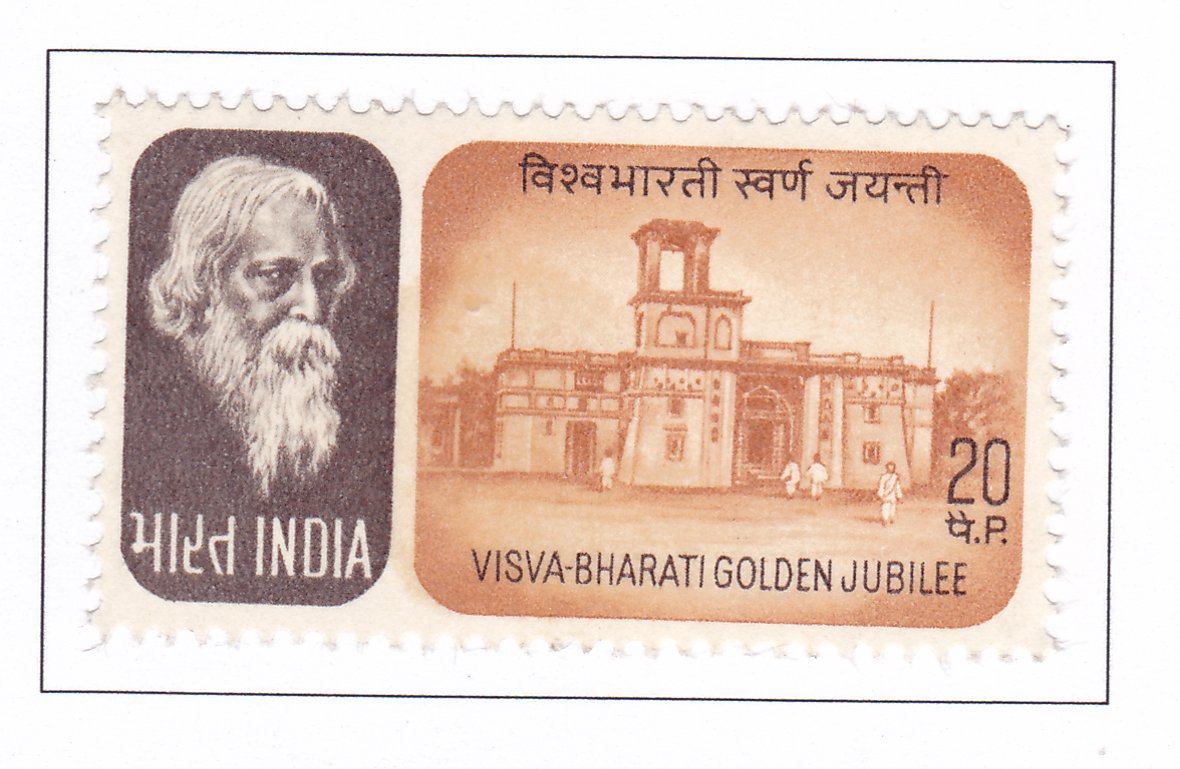Visva-Bharati Golden Jubilee

Technical Data
| Stamp Set | Golden Jubliees |
|---|---|
| Date of Issue | December 24, 1971 |
| Denomination | 20 nP |
| Quantity | 3,000,000 |
| Perforation | comb 14¾ x 14½ |
| Printer | Security Printing Press, Nashik |
| Watermark | No Watermark |
| Colors | Multicolor |
| Catalog Codes |
Michel IN 533 Stamp Number IN 549 Yvert et Tellier IN 333 Stanley Gibbons IN 653 |
| Themes | Anniversaries and Jubilees | Buildings | Famous people | Nobel Laureates | Universities |
Visva-Bharati, renowned globally as a center of learning, was established by Rabindranath Tagore, growing out of the Santiniketan Asrama founded by Maharshi Devendranath Tagore, Rabindranath’s father, in 1863. In December 1901, Rabindranath Tagore initiated an experimental school at Santiniketan with just five students, as a reaction against the rigid and joyless education system prevailing at that time. Despite facing financial challenges due to government hostility, the school persisted thanks to the dedication of Rabindranath and a committed group of workers.
Around 1912, Rabindranath received invaluable support from C. F. Andrews and W. W. Pearson, who joined him in his educational endeavors at Santiniketan. Mahatma Gandhi also briefly resided at Santiniketan with his Phoenix School students, although his other commitments limited his direct involvement with the institution.
After Rabindranath’s tour of Japan and America in December 1918, he envisioned creating an institution at Santiniketan that would serve as a cultural hub for the East. With support from colleagues, Visva-Bharati came into existence around this time, with the motto “Yatra Visvam Bhavatyekanidam,” meaning “Where the world makes its home in a single nest.”
From 1919, Visva-Bharati began offering higher education courses in various subjects like Buddhist Literature, Vedic and Classical Sanskrit, Pali, Prakrit, as well as emphasizing art and music, guided by renowned figures like Nandalal Bose.
The formal inauguration of Visva-Bharati took place in December 1921, embodying Rabindranath’s vision of India’s cultural wealth being open to the world. It attracted distinguished scholars and educators from around the world and India.
Rabindranath’s practical idealism also led to the establishment of an Institute of Rural Reconstruction at Sriniketan, complementing Visva-Bharati’s educational endeavors.
Following Rabindranath’s passing in 1941, Visva-Bharati faced challenges until it was declared an institution of national importance by the Indian Parliament in May 1951. It was incorporated as a residential university with Jawaharlal Nehru as its first Chancellor.
In 1971, Vishva-Bharati celebrated its 50th anniversary of service to the nation. The Indian Posts and Telegraphs Department commemorated this milestone by issuing a special postage stamp, recognizing the institution’s invaluable contributions to education and culture in India.
